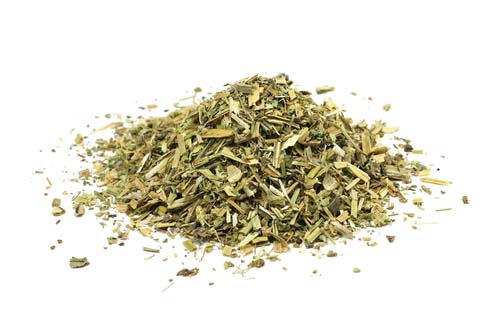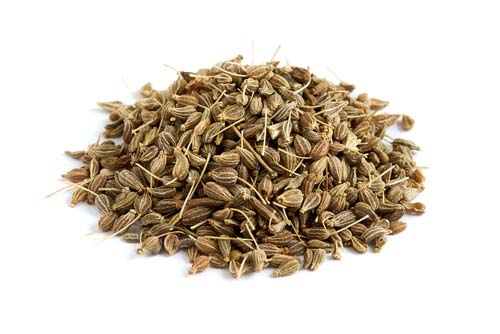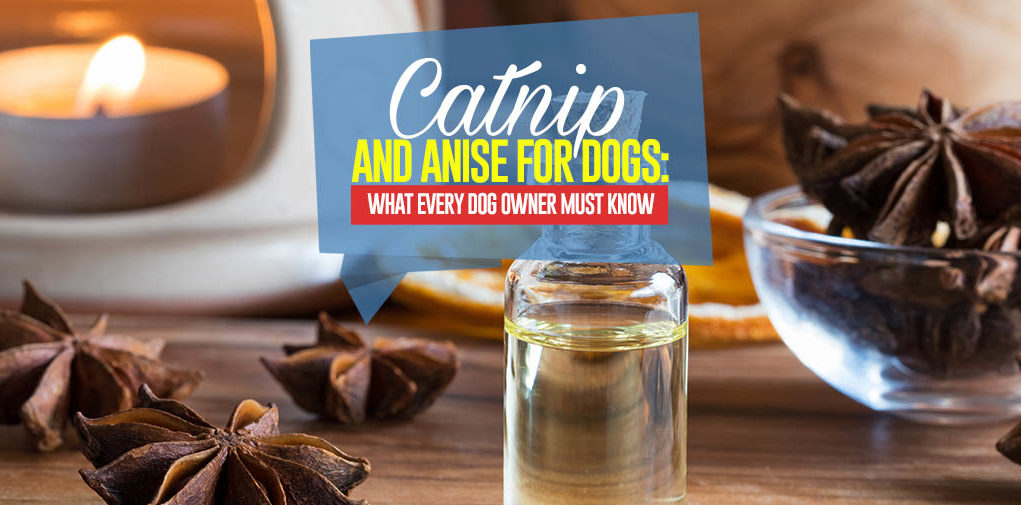Table of Contents
Even dog owners are familiar with the concept of catnip.
This herb affects cats the way some drugs affect humans. It's a great tool for training and entertaining cats.
According to Animal Care Clinic:
Catnip is an herb and it comes from the same family as mint. The active chemical compound in catnip is nepetalactone. The compound is found in the plant’s pods, leaves, and even coating its stem. This is the active ingredient that causes your cat to go crazy! Catnip can cause cats to feel mellow, experience a buzz, or even start acting a bit overexcited.
Unfortunately, catnip for dogs doesn't work the same way and can sometimes even be dangerous to use with canines.
But did you know that there’s a rumor going around that “dog nip” exists as well, which is essentially catnip for dogs?
What is this intoxicating substance, and why should you be overly cautious with its use?
Some owners may have already decided to try it, but before you do, read this article – we’re looking at everything you need to know about catnip for dogs – or the potentially deadly “dog nip.”
ALSO READ: 7 Proven Ways to Calm Down A Dog (Backed by Science)
Catnip – An Introduction
Before we start on the topic of “dog nip,” let’s talk briefly about catnip for dogs and cats and how this substance works differently in each animal.
What Is Catnip?
Catnip is a plant in the mint family that has a powerful odor and downy textured leaves.
It’s known for its ability to put cats into a state of euphoria, much like a “high” that humans obtain from certain drugs.
Catnip is harmless and nonaddictive to cats and is thought to create a “sexual” response in cats.
The chemical responsible for this reaction is nepetalactone in the plant's leaves and stems.
When cats are exposed to this substance, approximately 75% of them (who have reached sexual maturity) show altered behaviors.
These behaviors include rubbing themselves on the plant, vocalizing, salivating, and rolling around.
The effect of catnip lasts for around ten minutes, after which a cat is immune to further effects from the plant for approximately half an hour.
This is what dried catnip looks like:

How Does Catnip Work?
When the nepetalactone oils from the catnip plant come into contact with the nasal membranes, they stimulate the sensory system.
This pushes the olfactory bulb to respond by sending messages to the cat's brain’s amygdala and hypothalamus.
The amygdala then directs the cat's behavior in response to the catnip, while the hypothalamus creates the “sexual response” that is seen.
In short, the oils in catnip function as an artificial pheromone that triggers the cat’s sexual response.
Does Catnip Affect Dogs and Other Animals?
No. Catnip only affects cats in this way.
The reason is that the brain structure of all animals, including dogs, is different and is set up to respond to different stimuli.
If all brains were structured similarly, we would all respond to pheromones from every species, which is simply impractical in nature.
Is There a Catnip for Dogs?
Dog owners felt left out after realizing that the catnip effect on dogs is almost nil and went searching for the alternative.
Some claim that aniseed is the equivalent of catnip for dogs (this should not be confused with star anise).
Aniseed, also called Anise, is a plant that has long been used in human medicine for various applications, from pain relief to gas relief.
In moderation, anise for dogs and other animals is also used in holistic veterinary medicine to treat coughing.
Somewhere along the way, however, someone discovered that when exposed to an anise oil scent, given anise seeds, or given anise treats, dogs react similarly to cats exposed to catnip.
Thus the rumor that anise for dogs is essential catnip for dogs started spreading, but there are dangers associated with this.
This is what dried aniseed looks like:

Anise for Dogs and How It Affects Them
Not all dogs have the same response to anise, just like not all cats respond to catnip.
Dogs that react to anise become hyperactive or exceptionally mellow, which is why it works like catnip for dogs.
This seems to be determined by your dog’s natural temperament. Naturally, mellow dogs tend to become hyper, and hyperactive dogs tend to become mellow.
Dogs are also motivated to follow the scent of anise.
The anise oil has been used on lures for racing greyhounds to encourage them to chase the lure around the track.
Anise has also created a trail for foxhounds to follow when “drag hunting,” a humane alternative to fox hunting.
Anise Exposure and Your Dog
Some herbs and plants are unsafe for your dog. Is anise one of them?
Yes and no.
In limited quantities, anise for dogs is relatively safe.
However, when exposed to larger amounts of anise, your dog will show symptoms of diarrhea and an upset stomach.
When exposed to too much anise, your dog will show signs of nervous system depression.
These symptoms may include lowered heart rate, decreased respiration rate, unconsciousness, and possibly coma or death.
So how much anise is too much for your dog?
Since your dog’s reaction to anise will vary depending on its genetic makeup, size, age, and current health condition, it is impossible to say how much anise is too much for your dog.
The best way to find out how much anise is safe for your dog is to talk to your vet or a holistic veterinarian.
If you still have reservations about anise for dogs after talking to one of these professionals, we recommend avoiding anise completely.
Using Anise with Your Dog
 Anise for dogs can be used for safety, and you can reap some of its little benefits.
Anise for dogs can be used for safety, and you can reap some of its little benefits.
When you begin using anise with your dog, begin slowly with just a small pinch of seeds or a small diluted amount of essential oil for scent.
Your veterinarian will be a great reference point on how much anise is okay to start with.
There are also several different ways to give anise to dogs.
Homemade Anise Essential Oil
You can purchase anise essential oil, or you can make your own.
To make your own homemade anise for dogs' essential oil, you'll need the following:
- Raw anise seeds
- Sweet almond oil
- Container with a lid
- Mortar and pestle
Take raw anise seeds and use a mortar and pestle to crush them.
Only crush them enough to get the scent of the seeds; don’t turn them into powder.
Add the crushed seeds and debris from the mortar to a clean container, glass bottle, or jar.
Add enough sweet almond oil to the container to cover up the anise seeds.
Gently swirl the container to ensure the seeds are covered completely, then put an airtight lid on the container.
Now set the container on a sunny windowsill for the next four weeks.
After four weeks, strain out the seeds and funnel the remaining oil into a clean essential oil vial.
When using anise essential oil with your dog, use only a small single drop of the oil to scent the inside stuffing of a toy. Don’t use more than this!
Can dogs eat anise essential oil?
Absolutely not. Never allow your dog to ingest anise essential oil, and never put anise essential oil directly on your dog’s skin.
Can dogs eat anise seeds?
Seeds are a different matter. A couple of whole anise seeds can be sprinkled on your dog’s food, and it’s perfectly safe for your dog to eat them.
Anise seeds can also be ground and included in a treat recipe for your dog or added to a recipe whole.
Take a look at some of the anise treat recipes below.
6 Homemade Anise Dognip Dog Treat Recipes
If you're interested in catnip for dogs and want to try the “dog nip” alternatively, these six recipes are a great way to include anise for dogs and take advantage of this plant.
1. Carrot Anise Cookies
Ingredients:
- 1cup all-purpose flour
- 1 Tbsp. baking powder
- 1 cup oatmeal
- 1cup grated carrots
- 1 cup low sodium chicken stock
- 2 Tbsp. powdered anise
- 4 Tbsp. coconut oil
Instructions:
- Preheat the oven to 350 degrees F.
- Line a cookie sheet with parchment paper.
- Combine all of the ingredients and mix well until you get a dough.
- Roll out the dough and use a small cookie cutter to cut out treats.
- Place the treats on the parchment paper-lined tray and bake for 30 minutes or until golden brown and crunchy.
- Allow the treats to cool fully before serving.
2. Oat Bran Anise Treats
Ingredients:
- 1 cup whole wheat flour
- 1 1.2 cups unbleached white flour
- ¼ cup oat bran
- 1 ½ tsp. dry yeast
- 1Tbsp. anise seeds
- 1 cup water
- ¼ cup vegetable oil
Instructions:
- Line a cookie sheet with parchment paper.
- Combine all of the ingredients and mix well until you get a dough.
- Roll out the dough to 1/8” thick and use a small cookie cutter to cut out treats.
- Place the treats on the parchment paper-lined tray and cover them lightly with a clean towel. Leave them for an hour or so to rise.
- Preheat the oven to 275 degrees F.
- Bake the rose cookies for an hour or so until light golden brown.
- Turn off the heat. Leave the cookies on the baking tray in the oven overnight to allow them to dry out thoroughly.
3. Anise and Molasses Treats
Ingredients:
- 2 cups all-purpose flour
- 1 tsp. baking powder
- 1 egg
- ¼ cup room temperature butter
- ¼ cup molasses
- 2 tsp. anise seed
Instructions:
- Line a cookie sheet with parchment paper.
- Preheat the oven to 350 degrees F.
- Combine all of the ingredients and mix well until you get a sticky dough.
- Pull small marble-sized pieces of the dough off the larger ball and roll them into balls. Place the smaller balls of dough on the parchment paper and flatten slightly.
- Bake for 15 minutes until cooked through.
- Allow the treats to cool completely and store them in the refrigerator.
4. Anise, Sweet Potato, and Peanut Butter Treats
Ingredients:
- 2 ½ cups whole wheat flour
- 1 cooked sweet potato
- 2 eggs
- 5 Tbsp. all-natural creamy peanut butter
- 1 Tbsp. crushed anise seed
Instructions:
- Line a cookie sheet with parchment paper.
- Preheat the oven to 350 degrees F.
- Once the sweet potato has cooled, scoop out the middle and throw away the skin.
- In a mixing bowl, combine the peanut butter and eggs with the cooled sweet potato and mix until thoroughly combined.
- Once combined, slowly add the flour as you continue mixing until you get a dough that is no longer sticky but not dry. You may not need all of the flour to do this.
- Roll out the dough to ¼” thick and cut out your cookies with a cookie cutter.
- Place the cookies on the baking sheet and bake for 20 to 30 minutes until browned.
- Once cooked through, allow the cookies to cool completely before serving.
5. Liver Anise Canine Brownies
Ingredients:
- 1 lb. liver
- 1 ½ cups all-purpose flour
- ½ tsp. salt
- 1 cup cornmeal
- 1 tsp. anise seed
Instructions:
- Preheat the oven to 350 degrees F.
- Cover a baking sheet with parchment paper.
- Rinse and dry the liver lightly with a paper towel. Once dry, cut the liver roughly, then grind it in your food processor.
- In a mixing bowl, combine your flour, anise, and cornmeal, and then add in the ground liver.
- Mix the ingredients while adding the salt.
- Spread the mixture onto the parchment paper-covered baking sheet and bake for 20 minutes or until cooked through.
- Once cooked through, cut the “brownies” into squares and refrigerate.
6. Carob Dipped Anise Cookies
Ingredients:
- 1 ½ cups whole wheat flour
- 1 cup unbleached all-purpose flour
- 2 Tbsp. soy flour
- 2 Tbsp. wheat bran
- 1 ½ tsp. dry baking yeast
- ½ cup cornmeal
- 2 Tbsp. carob powder
- 2 Tbsp. anise seeds
- 1 tsp. cinnamon
- Dog-friendly icing
- 1c water
- ¼ cup olive oil
Instructions:
- Preheat the oven to 275 degrees F.
- Cover a baking sheet with parchment paper.
- Combine all of the ingredients except the carob and icing. When you get a dough-like texture, roll the dough out to around ¼” thick.
- Use a cookie cutter to cut out your cookies and place them on the baking sheet.
- Bake for an hour or so or until the cookies are golden brown.
- Turn off the oven and then leave the cookies in the oven overnight so that they can dry out.
- The next day once the cookies are cooled, combine your carob (never use chocolate) with the dog-friendly icing and mix well.
- Dip half of each cookie into the icing mixture, then set them back on the parchment paper to harden.
- Once the icing on each cookie has hardened, store them in a large Tupperware with a sheet of parchment paper between each layer of cookies.
- Store in a cool, dry place or the refrigerator if you prefer.
The Mandatory Disclaimer
I have mentioned this already, but it’s worth mentioning again – anise for dogs is not the same thing as catnip for dogs.
Aniseed can be fatal to your dog if they are overexposed to it.
Always consult your veterinarian before exposing your dog to anise, and if you have any concerns about using anise with your dog, don’t use it at all. The risks outweigh the benefits.
Common Questions about Anise Seed Extract and Dogs
If you still have some questions about dog treats and whether you can give your pooch star anise or other herbs, this section should clear them up.
How Much Anise Can a Dog Have?
Experts know that dog treats can include a small amount of anise. But there is no specific research into how much is too much. Vets agree that just one or two sprinkles of raw anise should be fine, even daily.
Is There Anything Like Catnip for Dogs?
Yes, anise has a similar effect to catnip but for dogs. The only caveat is that giving your dog too much star anise can lead to side effects.
Does Anise Get Dogs High?
Anise can get dogs high, but it does not affect all of them. This is similar to how not all cats react to catnip. If your dog reacts to anise, he will become extremely mellow or hyperactive.
Is Anise Toxic to Dogs?
Anise is safe for dogs in small quantities. If you give your dog too much, however, it can have some negative effects.
These include slightly depressing his nervous system or upsetting his stomach. Giving your dog a small amount should not be a problem.
Catnip for Dogs: Before You Go
Is catnip safe for dogs?
Absolutely! It is not only safe for dogs, but it is also healthy! Numerous essential nutrients, such as Vitamin C, can be found in catnip.
Catnip can be used to calm Fido down if they experience anxiety when they are left alone at home, during storms, or when seeing a vet.
It can also be used to treat gas and relax the muscles in the digestive tract to stop them from removing waste products too quickly.
Depending on the dog's size and how much is consumed, you ought to be able to observe effects in around 30 minutes for those that do react to catnip.













